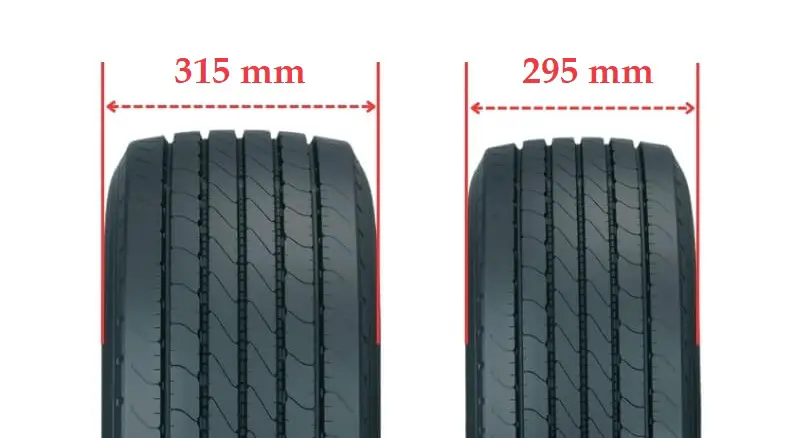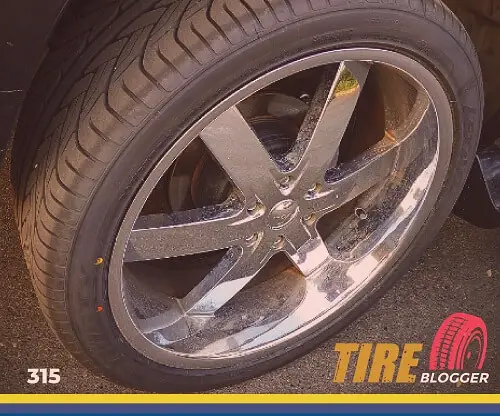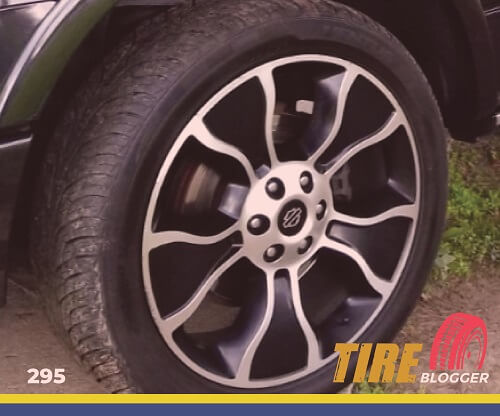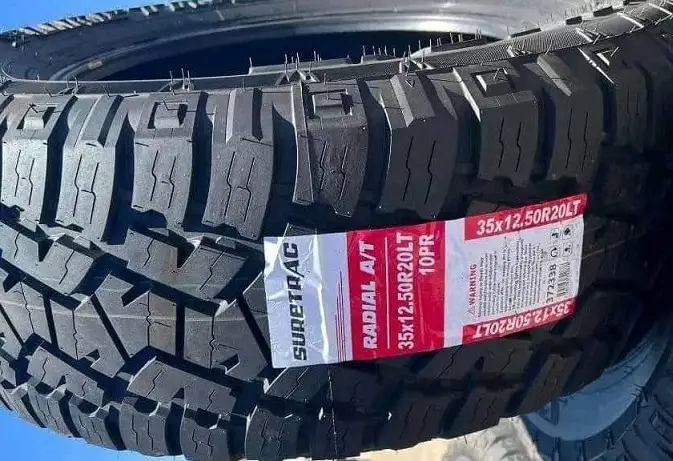295 vs 315 Tires

At first glance, the difference is all in the numbers—295 mm versus 315 mm in tread width. That’s roughly a 0.79-inch difference. This choice might seem like a small detail, but it has big implications for your ride.
295 vs 315 Table
| Tire Size 295 | Tire Size 315 |
|---|---|
| Tread width of 295 mm | Tread width of 315 mm |
| Lower clearance, potentially more accurate speedometer | Higher clearance, may affect speedometer accuracy |
| Better fuel efficiency due to smaller contact patch | Reduced fuel efficiency due to larger rolling resistance |
| Smoother on highways and urban roads | Superior impact absorption on rough terrains |
| Sleeker, more aerodynamic appearance | More aggressive and bold appearance |
| Enhanced handling and quicker response on paved roads | Improved stability and traction in off-road conditions |
| Quieter on smooth surfaces, more road vibration | More road noise, better vibration absorption |
| Potentially even wear and longer tread life | May cause quicker wear on vehicle components |
| Better in snow and ice by cutting through to the road | Superior traction in muddy or off-road conditions |
Ground Clearance
Larger tires, such as the 315, enhance ground clearance, facilitating better navigation through rough terrains and off-road conditions. This increase in clearance, however, may lead to inaccuracies in speedometer readings.
Conversely, the slightly smaller 295 tires might reduce ground clearance, potentially increasing the risk of undercarriage damage on uneven surfaces, but with more accurate speedometer readings.
Gas Mileage
Fuel efficiency is another factor impacted by tire size. The 295 tires, with their smaller contact patch and reduced rotational mass, tend to offer better gas mileage, making them more suited for daily commuting and long-haul travel.
The larger 315 tires, due to their increased rolling resistance and heavier weight, may decrease fuel economy.

Ride Comfort
When it comes to comfort, larger tires like the 315s provide superior impact absorption on rough terrains, thanks to their increased sidewall height.
Smaller 295 tires, however, may offer a smoother ride on highways and urban roads, prioritizing comfort on smoother surfaces.
Aesthetics Look
Aesthetic preferences play a significant role in tire selection. The larger 315 tires offer a more aggressive look, appealing to those seeking a bold vehicle appearance.
The 295 tires, though less imposing, contribute to a sleeker, more aerodynamic profile, potentially enhancing vehicle performance.
Handling & Stability
Handling and stability are paramount for safe driving. The 295 tires excel in providing enhanced handling and quicker response on paved roads, making them ideal for urban and highway driving.
The 315 tires, with their larger footprint, offer improved stability and traction in off-road conditions and on uneven surfaces.

Noise & Vibration
Noise and vibration levels differ significantly between the two sizes. The smaller 295 tires are generally quieter on smooth roads but may transmit more vibrations from road imperfections.
Larger 315 tires, especially those with aggressive tread patterns, might generate more noise but can absorb vibrations better due to their increased air volume and sidewall height.
Durability & Wear
Durability and wear patterns also vary. Smaller tires like the 295s can exhibit even wear and potentially longer tread life.
While the larger 315 tires, though capable of enduring more impacts, might cause quicker wear on vehicle components due to their additional weight.
Adverse Condition Performance
In adverse conditions, the narrower 295 tires can offer better performance in snow and ice by cutting through to the road surface more effectively.
In contrast, the wider 315 tires may provide superior traction in muddy or off-road conditions.

Difference Between 295 and 315 Tires
The main difference is the section width, with 315 tires being 20mm wider than 295 tires. This affects performance aspects like grip, handling, and fuel efficiency.
Can I Use 295 Tires Instead of 315?
Yes, it’s possible. The rim width ranges for 295 and 315 tires overlap, making the switch feasible. However, ensure the aspect ratio and rim diameter match your current setup, or keep the overall diameter difference within 3%.
Can I Use 315 Tires Instead of 295?
Yes, you can use 315 tires instead of 295. The rim width ranges overlap, allowing for the switch. Remember to match the aspect ratio and rim diameter, or maintain the overall diameter difference within 3%.

Can I Put 295 Tires on 315 Rims?
Yes, you can put 295 tires on rims designed for 315 tires. The ideal rim width range for 295 tires (9.0-10.5 inches) overlaps with the range for 315 tires (10.0-11.5 inches), ensuring proper fitment.
Can I Put 315 Tires on 295 Rims?
Yes, you can put 315 tires on rims designed for 295 tires. The ideal rim width range for 315 tires (10.0-11.5 inches) overlaps with the range for 295 tires (9.0-10.5 inches), allowing for proper fitment.
Our Observation
Choosing between 295 and 315 tires ultimately depends on your specific driving needs and preferences. For drivers prioritizing fuel efficiency, handling, and a smoother ride on paved roads, the 295 tires are the superior choice.
Conversely, for those seeking improved ground clearance, off-road capability, and a more aggressive appearance, the 315 tires stand out.
Consider your driving environment, performance expectations, and aesthetic desires when selecting the tire size that best fits your vehicle and driving style.

Meet Caitlin McCormack, a Tire Size Expert and Blogger Passionate About Everything Related to Tires. With Years of Experience in the Tire Industry, Caitlin Has Become an Expert in Tire Sizes and Their Impact on Vehicle Performance.
